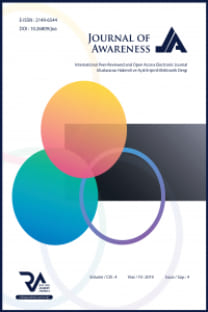ECOCRITICISM AND MAGICAL REALISM IN KAREN TEI YAMASHITA’S THROUGH THE ARC OF THE RAINFOREST
In her
novel Through the Arc of the Rainforest (1990)
Karen Tei Yamashita deploys magical realist narrative technique to offer a
globally-embracing ecocritical criticism that unfolds global connectivity of
peoples, places, and their destinies. As such, she uses a deterritorialized
environmental approach, which favors eco-cosmopolitanism over bioregionalism,
drawing our attention to the shortcomings of locally-based ecocritical studies
that overlook the inextricable political, social, and cultural connections
between the local and the global in an age of unprecedented mobility and global
modernity. Another environmental issue Yamashati sheds light upon is the fact
of slow violence, a violence, as Rob Nixon argues, appears out of sight, and
over time. To render this invisible violence visible, she employs magical
realism. The intersection between magical realism and ecocriticism in Through the Arc fuels a representational void by
giving shape not only to the insidious workings of global capitalism
masquerading as “scientific development,” and/or “progress” but also to the
slow, invisible environmental violence whose long-term effects bring about
human and environmental cost.
___
- Bahng, Aimee. “Extrapolating Transnational Arc, Excavating Imperial Legacies: The Speculative Acts of Karen Tei Yamashati’s ‘Through the Arc of the Rain Forest’” MELUS. 33.4 (2008): 1323-44.JSTOR. Web. 16 Nov 2017.
- Barbosa, Luiz C. Introduction. By Barbosa. The Brazilian Amazon Rain Forest: Global Ecopolitics, Development, and Democracy. Maryland: UP of America, 2000. 1-27. Print.
- Beck, Ulrich. Risikogesellschaft: Auf dem Weg in eine andere Moderne. Frankfurt: Suhrkamp, 1996. Print.
- Benito, Jesus, Ana Mª Manzanas and Begoña Simal. Uncertain Mirrors. Magical Realisms in US Ethnic Literatures. Amsterdam: Rodopi, 2009. Print. Critical Approaches to Ethnic American Literature Ser. 0 3.
- Buell, Lawrence. Introduction. The Environmental Imagination: Thoreau, Nature Writing and the Formation of American Culture. By Buell. Cambridge, Massachusetts: Belknap P of Harvard UP, 1996. 1-27. Print.
- Bullard, Robert D. “Environmental Justice in the 21st Century: Race Still Matters. Phylon. 49.3-4 (2001): 151-171. Web. 16 Nov 2017.
- Deckard, Sharae. “Editorial.” Green Letters: Studies in Ecocriticism. 16 (2012): 5-15. JSTOR. Web. 10 July 2013.
- Jameson, Fredrick. Postmodernism or the Cultural Logic of Late Capitalism. Durham: Duke UP, 1991. Print.
- Garrard, Greg. Ecociriticsm. New York: Routledge, 2004. e-book.
- Heise, Ursula. Sense of Place and Sense of Planet. The Environmental Imagination of the Poor. Oxford, New York: Oxford UP, 2008. Print.
- Huggan, Graham and Helen Tiffin. Postcolonial Ecocriticism: Literature, Animals, Environment. Abington: Routledge, 2010. Print.
- Marland, Pippa. Ecocriticism. Literature Compass. 10.11 (2013): 846-68. JSTOR. Web. 1 Nov 2017.
- Mukherjee, Pablo Upamanyu. Postcolonial Environments, Nature, Culture and the Contemporary Indian Novel in English. Basingtoke and New York: Palgrave Macmillan, 2010. Print.
- Nixon, Rob. Introduction. Slow Violence and the Environmentalism of the Poor. By Nixon. Cambridge, Massachusetts: 2011. 1-45. Print.
- Pacheco, Tãnia. “Inequality, Environmental Injustice, and Racism in Brazil: Beyond the Question of Color.” Development in Practice. 18.6 (2008): 713-725. JSTOR. Web. 16 Nov 2017.
- Sandin, Lyn Di Iorio and Richard Perez. Introduction. Moments of Magical Realism in US Ethnic Literatures. By Sandin and Perez. New York: Palgrave Macmillan, 2013. 10-15. Print.
- Yamashati, Karen Tei. Through the Arc of the Rain Forest. Minneapolis: Coffee House Press, 1990. Print.
- ISSN: 2149-6544
- Başlangıç: 2016
- Yayıncı: Rating Academy
Sayıdaki Diğer Makaleler
TÜRKİYE'DE BİLGİ EDİNME HAKKI: BÜYÜKŞEHİR BELEDİYE WEB SAYFALARI ÜZERİNDEN BİR DEĞERLENDİRME
Filiz TUFAN EMİNİ, Çağlar Eren AYAZ
21. YÜZYILIN İDEOLOJİK GÜÇ MÜCADELESİ: ULUSLARARASI SİSTEMİN DEĞİŞEN DOĞASINI ANLAMAK
İSPANYA’NIN ALTIN ÇAĞINDA SEVİLYA KENTİNİN İSPANYOL SANATINDAKİ YERİ
